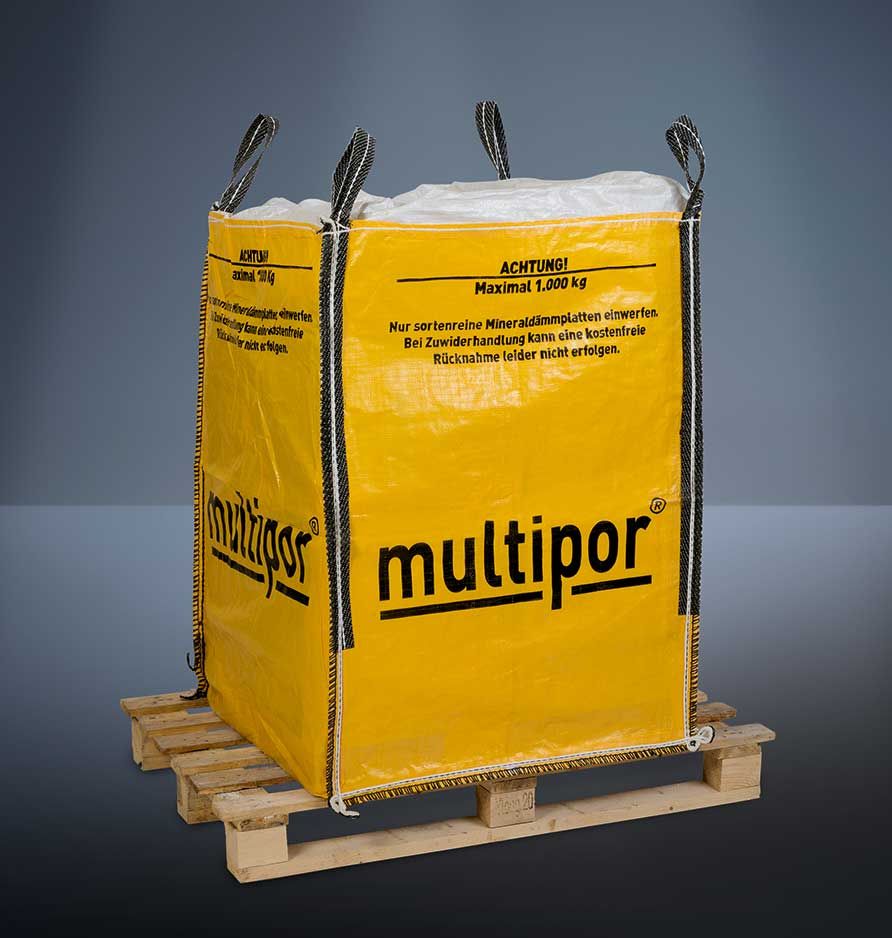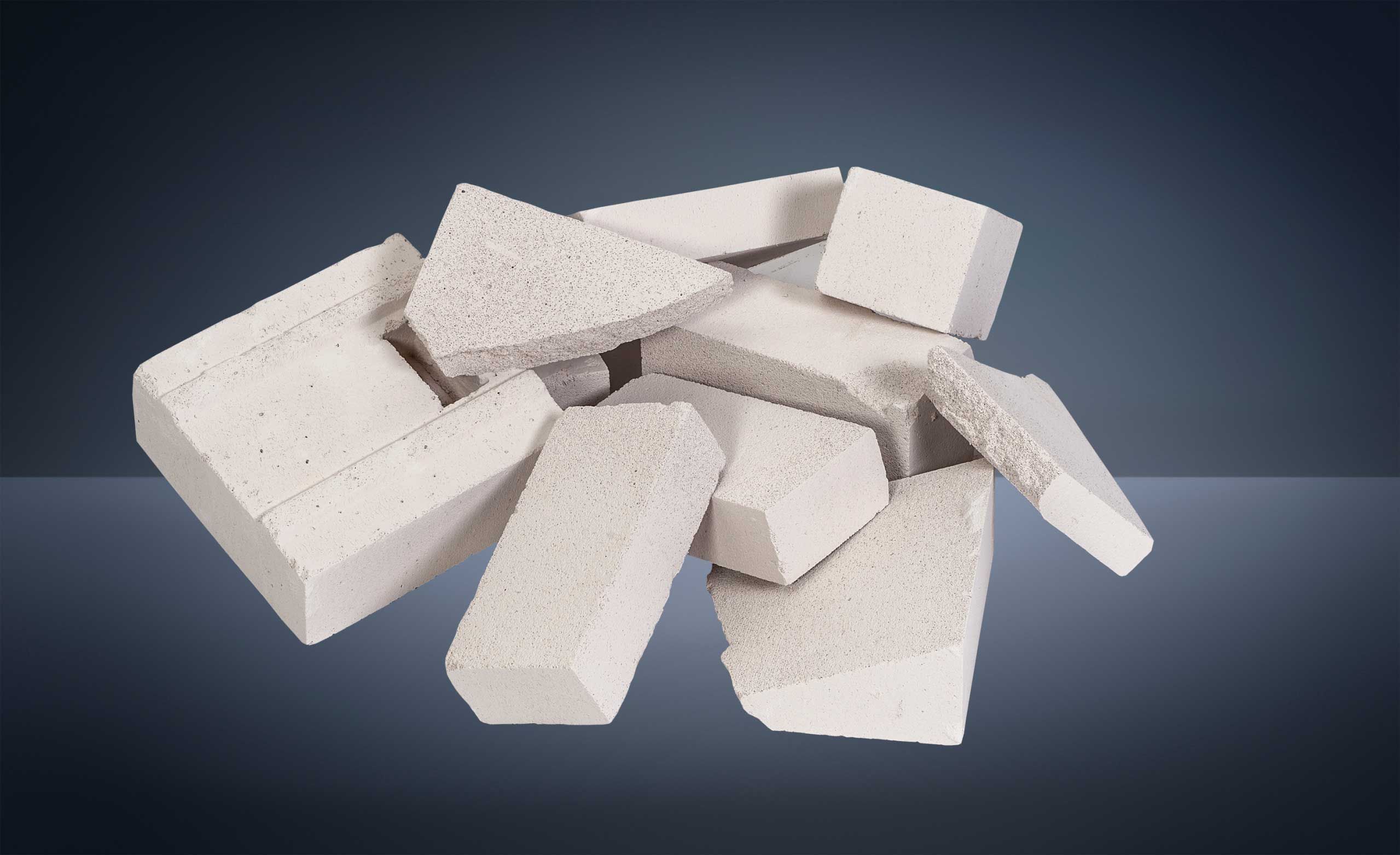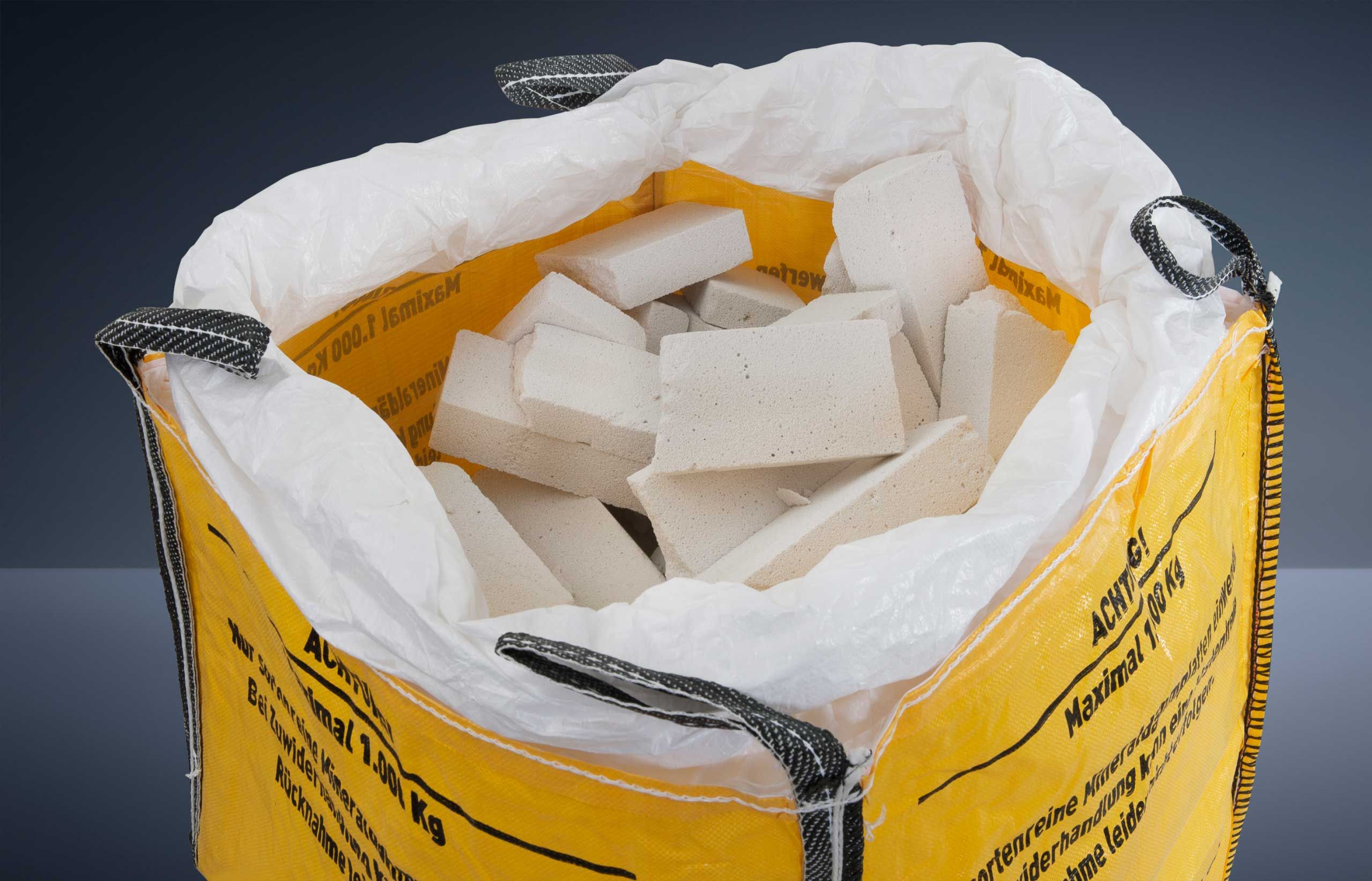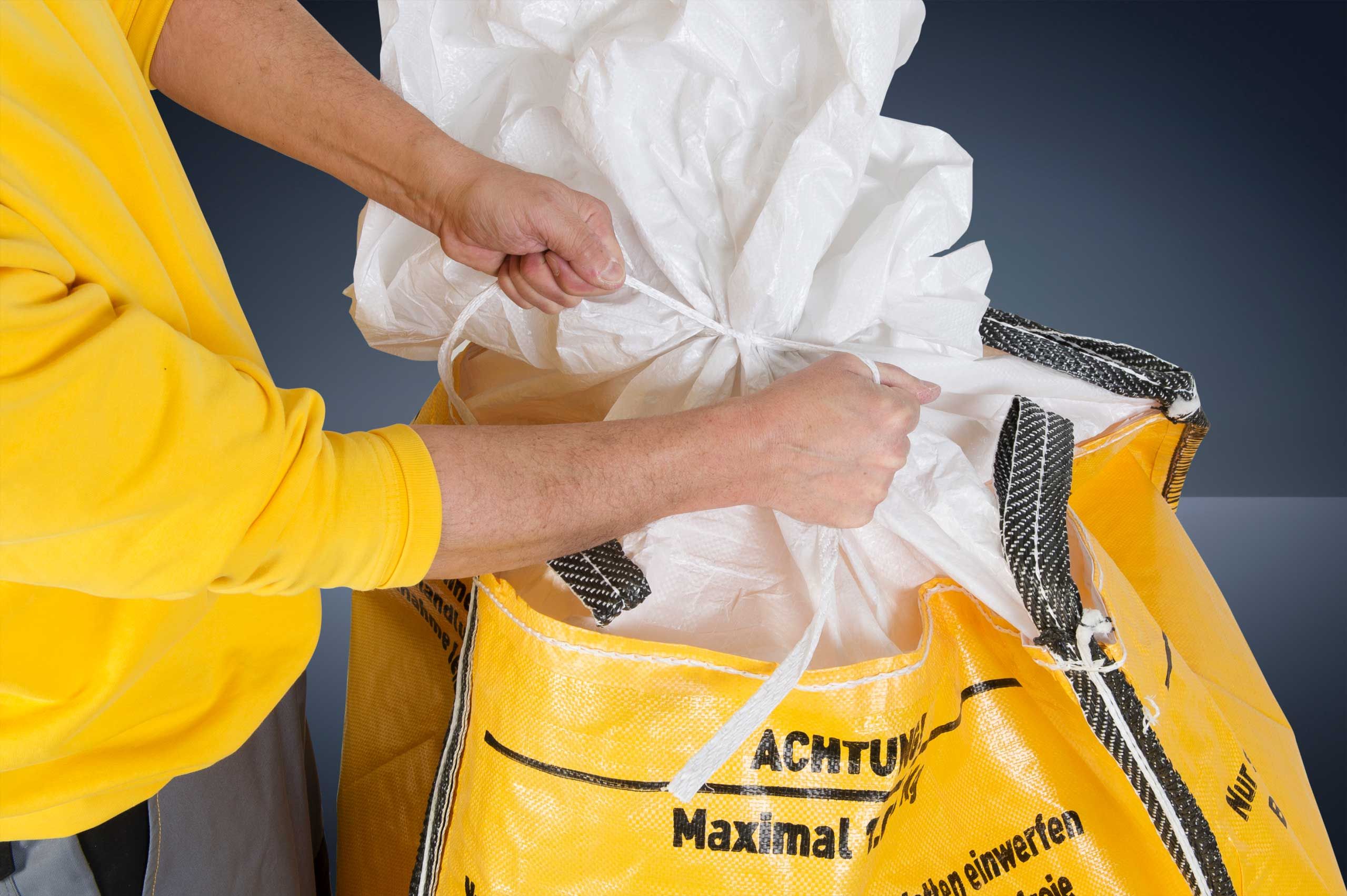Close the circle: Recycling of autoclaved aerated concrete
Xella pursues three circulation models to return autoclaved aerated concrete (AAC) residues to the production cycle: This involves residues from production, from the construction site and even AAC residues from demolition and dismantling projects.
In the Xella AAC plants, residues that arise during production are directly returned to the production cycle – in ground form together with the primary raw materials.
 If waste is produced on the construction site, so-called big bags come into play in Germany. In these big bags the material can be collected directly on the construction site. A big bag can hold up to 500 kg, and the purity of the material is crucial when filling it. This means that no waste such as foils or other construction waste may enter the bags. The big bags are then returned to the delivery plant or picked up from the curb. The returned leftovers are then either processed in the plant into granulated autoclaved aerated concrete – which can be used to produce cat litter, for example – or returned as fine flour to the ongoing production of AAC.
If waste is produced on the construction site, so-called big bags come into play in Germany. In these big bags the material can be collected directly on the construction site. A big bag can hold up to 500 kg, and the purity of the material is crucial when filling it. This means that no waste such as foils or other construction waste may enter the bags. The big bags are then returned to the delivery plant or picked up from the curb. The returned leftovers are then either processed in the plant into granulated autoclaved aerated concrete – which can be used to produce cat litter, for example – or returned as fine flour to the ongoing production of AAC.
One challenge that Xella is currently researching is the recycling of old autoclaved aerated concrete from demolition and dismantling projects. In 2019 the Federal Ministry of Education and Research (BMBF), for example, did promise its financial support for a three-year research project on the recycling of autoclaved aerated concrete. In the consortium named REPOST ("Recycling-Cluster autoclaved aerated concrete", funding code 033R249A, https://bit.ly/2PexU4v) are the Karlsruhe Institute of Technology, Otto Dörner Entsorgung, Hamburg and Xella Technologie- und Forschungsgesellschaft mbH.
Learn more about the three circulation models in the video by Dr. Oliver Kreft, responsible for circular economy at Xella Technologie- und Forschungsgesellschaft mbH:
The development of the numbers shows how efficient the Big Bag system really is: In the introduction year 2015 alone, more than 500 Big Bags (approx. 250 tons of autoclaved aerated concrete) were returned to the supplier plants in Southern Germany. By 2016, this figure had risen to just under 2,750; that is well over 1,000 tons of residual autoclaved aerated concrete. "In the meantime, the very successful disposal concept has been expanded throughout Germany, so that by 2019 we have already reclaimed just under 8,500 Big Bags. This corresponds to approx. 4,000 tons of autoclaved aerated concrete," reports Dr. Kreft.



Xella is also pursuing similar circulation models in other countries: Belgium and the Netherlands, for example, have long since started using the return system using big bags, and in Denmark special containers are available on construction sites for the return of autoclaved aerated concrete residues.
More about Xella Technologie- und Forschungsgesellschaft mbH.
More sustainability news
-
Faster, bigger, better: improving shippings via the Danube river
Almost a year ago, Xella Romania organized the first barge transport of Xella products from Serbia across the Danube river. Waiting for the right moment, the team finally managed to surpass itself.
View more -
Empowering Rural Education: transforming Schools in Romania
In partnership with the Bookland Association, Xella has embarked on a journey of transformation aimed at reshaping the educational landscape in rural Romania. Our mission is clear: to combat school dr
View more -
Employee well-being and safety are not only a priority
While environmental sustainability is a critical factor for us, the well-being and the safety of our employees are not only priorities but core values. How we focus on our people and provide them with
View more
Introduction
2023 Xella International. All rights reserved.